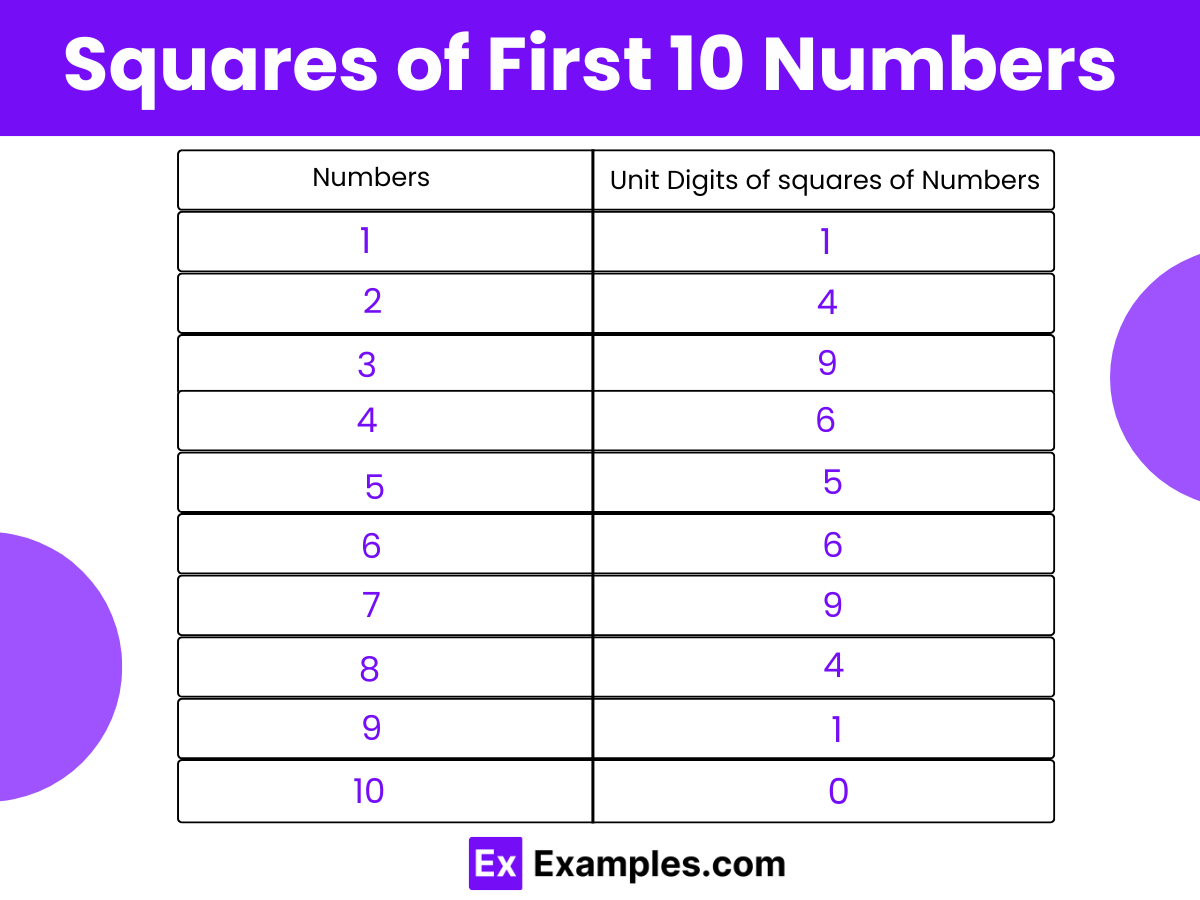What is the square root of 49?
6
7
8
9


Mastering square root tricks can significantly enhance your mathematical efficiency, especially when dealing with both rational and irrational numbers in algebraic calculations. Understanding square roots simplifies operations involving perfect squares, integers, and helps solve equations swiftly. The least square method in statistics leverages square root calculations to minimize error. Additionally, working with square and square roots aids in grasping relationships in complex numbers. Recognizing these patterns improves mental maths and numerical accuracy in various mathematical disciplines.

To estimate the square root of a 5-digit number, begin by pairing the digits, starting from right to left. Then, consult a chart that matches the unit digits of numbers with the possible unit digits of their square roots to determine possible values. Analyze the group of the first three digits, called 𝑛, and identify the two perfect squares between which 𝑛n lies (√𝑎²<𝑛<√𝑏²). This process helps establish that 𝑎<𝑛<𝑏, so 𝑎a will be the tens digit of the square root.
There are only two numbers whose squares do not repeat—5 and 10—and their unique properties should be used in determining the unit digit. If the unit digit identified in Step 2 is 5 or 10, that value is used directly. If not, multiply the digits 𝑎 and 𝑏. If 𝑎𝑏≤𝑛, choose 𝑏 as the units digit; otherwise, choose 𝑎. This structured approach helps estimate the square root by narrowing down potential values using logic and patterns in the squares of numbers.
Pairing the digits from right to left helps in visualizing and separating the whole number and fractional parts of the number, which is crucial for accurately estimating square roots. It allows you to work with the digits in manageable chunks.
Matching the unit digit with a square root chart helps narrow down possible values for the square root’s unit digit. The chart leverages patterns in squares of numbers, making it easier to find potential values without calculations.
The first group of digits is crucial because it determines the primary range in which the square root lies. Identifying this range provides the tens digit and establishes the general magnitude of the square root.
To find the tens digit, identify the two perfect squares between which the first group of digits lies. The lower square’s root represents the tens digit, as it is closest to the number but still less than or equal to it.
The numbers 5 and 10 are unique because their squares are 25 and 100, respectively. This makes their unit digits easy to identify directly, without further calculation, simplifying the estimation process.
Text prompt
Add Tone
10 Examples of Public speaking
20 Examples of Gas lighting
What is the square root of 49?
6
7
8
9
Find the square root of 64.
7
8
9
10
What is the square root of 81?
8
9
10
11
Calculate the square root of 100.
9
10
11
12
What is the square root of 121?
10
11
12
13
Find the square root of 144.
11
12
13
14
What is the square root of 169?
12
13
14
15
Calculate the square root of 196.
13
14
15
16
What is the square root of 225?
14
15
16
17
Find the square root of 256.
15
16
17
18
Before you leave, take our quick quiz to enhance your learning!

